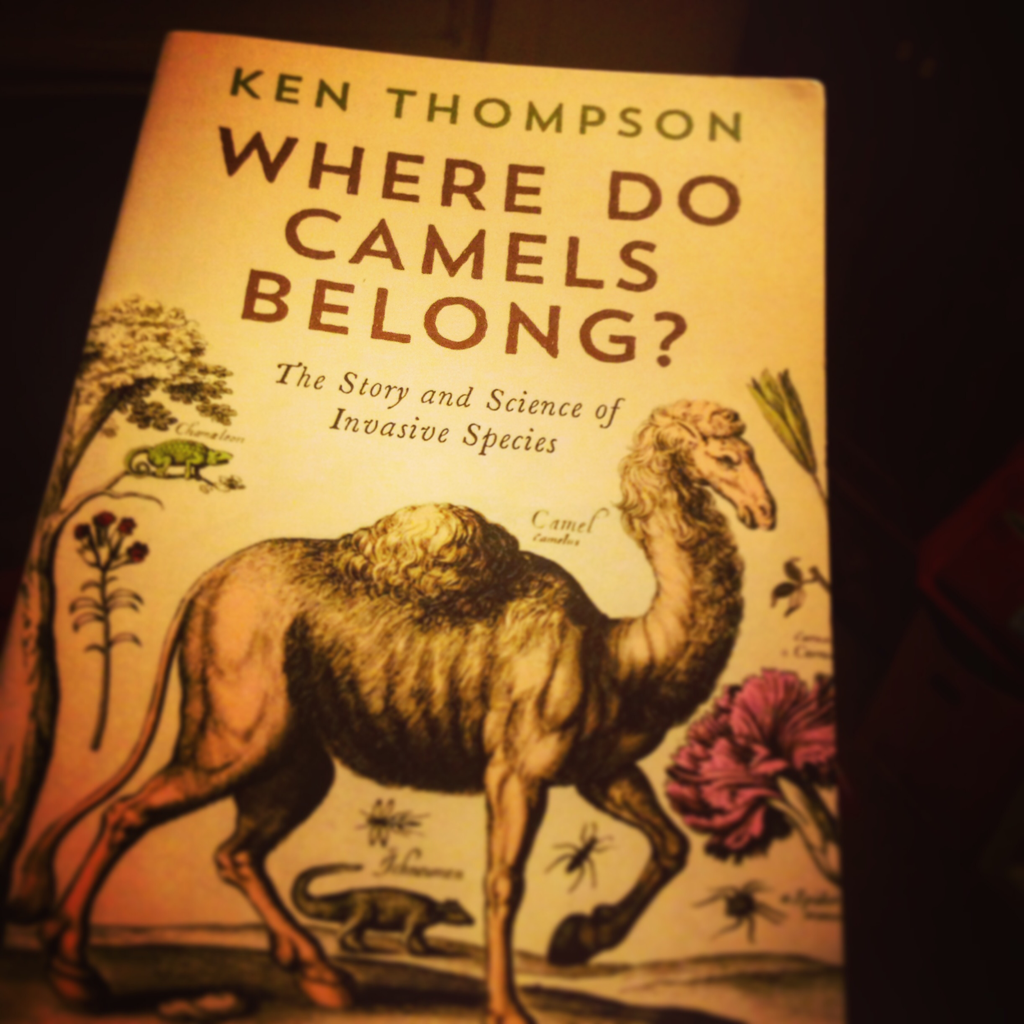The first question that the book asks is what is native? When should an animal or plant be considered native to an area. Thompson eloquently demonstrates this in two ways, first by using the books title character the camel. Camels first evolved in North America, but have since spread to South America, Asia and North Africa. So are they American, Asian or African? To complicate this further, the only place in the world where they are truly wild is Australia! So the concept of native is not an easy to define one. Another issue, especially prescient to the UK, is that animals/plants may have existed in an area the past but either due to lack of colonising after the most recent ice age or human induced extinction are no longer present in the wild. Are these species native? If so, how far back do you go before they are no longer native?
The book goes on to expound on niche theory and the relative lack of evidence to support it, with its impacts on ecology and conservation. The idea that all habitats are static and so 'full' is also taken to task, with the author explaining that what we currently think of as an ecosystem is just a snapshot in an ever changing combination of animals and plants. Far from reducing biodiversity, the addition of alien species typically increases local biodiversity. It's just that many of these species tend to be obvious, gaudy, and have the misfortune of doing very well in habitats disturbed by humans and so come quickly to our attention. Thompson goes to great pains to stress how well suited many of these species are to living with man and the environments that we create. In his discussion of Tamarisk he goes into detail about how well adapted this plant is to environments that we have denuded but that it rather than we get the blame. This kind of thinking will rarely solve a problem.
The impact of human opinion on what we think of invasive and bad, and thus in need of removal is brilliantly summed up in the tail of the Guadeloupe raccoon. This animal was once thought to be an endemic native, a separate species from those found in North and South America. So beloved was this animal that it was the emblem species for the Parc National de Guadeloupe. But after a study showed that they were just regular raccoons it went from endanger endemic to an invasive species and a control programme was set up! Another interesting one to think about is Zebra mussels, the scourge of the Great Lakes. In addition to clogging up pipes, these Russian immigrants also: clean the water to make it clearer, increase the amount of benthic invertebrates, increase the amount of aquatic plants in the lakes and also are a really big source of food for many predators including migrating birds. So are they really that bad?
At no point does the book say that all Alien species are good and that no environmental problems are caused by them. In fact, one chapter actually concludes by saying that the Brown tree snake has had an awful impact on Guam. What the book does is point out that many of these species are thriving because of human impacts on local ecosystems. The species that we are spreading around the world and are successfully colonising new areas are ones that do well close to humans. Many of them only really occur in disturbed land, and are thus a symptom of environmental degradation not its cause. One part of the book even tells about how succession, which can take tens years, leads to old forest regrowing in areas previously riddled with invasives and then of the eventual exclusion of these species.
The final chapter, Five Myths About Invasions, is a great summation with sections on #1 Alien invasions reduce biodiversity and ecosystem function #2 Alien species cost us a fortune #3 Aliens are always to blame #4 Aliens are out to get us and finally #5 Aliens are bad, natives good.
Thompson is great writer and the book is really engaging and informative, helping to bust myths and dispel preconceptions. I thoroughly recommend it!
https://profilebooks.com/where-do-camels-belong.html


 RSS Feed
RSS Feed
